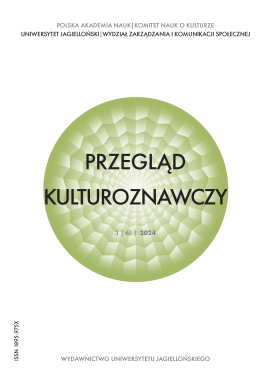POROSTY. ZIEMSKIE ALFABETY WZAJEMNOŚCI
LICHENS. EARTHLY ALPHABETS OF RECIPROCITY
Author(s): Magdalena Ochwat, Małgorzata Wójcik-Dudek, Piotr SkubałaSubject(s): Human Ecology, Sociology of Culture
Published by: Wydawnictwo Uniwersytetu Jagiellońskiego
Keywords: fungus; alga; cooperation; holobiont; community; symbiotic humanities; geolinguistics;
Summary/Abstract: Lichens do not belong to plants or animals; they are long-lived and stable, capable ofsurviving in the harsh conditions of concrete urbanization in modern cities. Their strength comesfrom the hybrid combination of a fungus, a green alga, or a cyanobacterium, along with the millionsof supporting cells from other organisms. This alliance of fungi and algae, which we observe todayin the form of lichens, once played a crucial role in shaping life on Earth. Lichens testify that duringtimes of scarcity, mutual assistance becomes key to survival. Their symbiotic history, presented inthis article, is a lesson we urgently need today about reciprocity and the formation of new, diversecommunities. Lichens are an excellent example of how to create a culture of mutuality and com-munity, while offering an alternative to a life of alienation, individual functioning, and the pursuit of maximizing profit. They provide us with an alternative model of life on Earth, in contrast toindividualistic, selfish, and individual-centered ways. The properties of lichens and their practicesof forming alliances can serve as guidelines for functioning during the climate and environmentalcrisis, when resources are shrinking, and global temperatures are reaching record highs. The meth-odology we apply can be called “symbiotic humanities”. Its task is to uncover various forms of lifeon Earth and convey a more-than-human perspective of the world, one that emphasizes interweav-ing, relationships, connections, kinships, and the fact that every species exists only through others.This text is enriched with images of lichens to visually demonstrate to the reader the different formsof embodiment of these fascinating organisms. The article serves as an invitation to observe them,to decipher the irregular calligraphy of their thalli. We present the Lichen Manifesto and literarytexts that may inspire new, unconventional ways of perceiving the world, encouraging explorationof symbiosis, complexity, and the polyphony of lichen nature, as well as the study of geolinguistics.
Journal: Przegląd Kulturoznawczy
- Issue Year: 61/2024
- Issue No: 3
- Page Range: 424-449
- Page Count: 26
- Language: English

